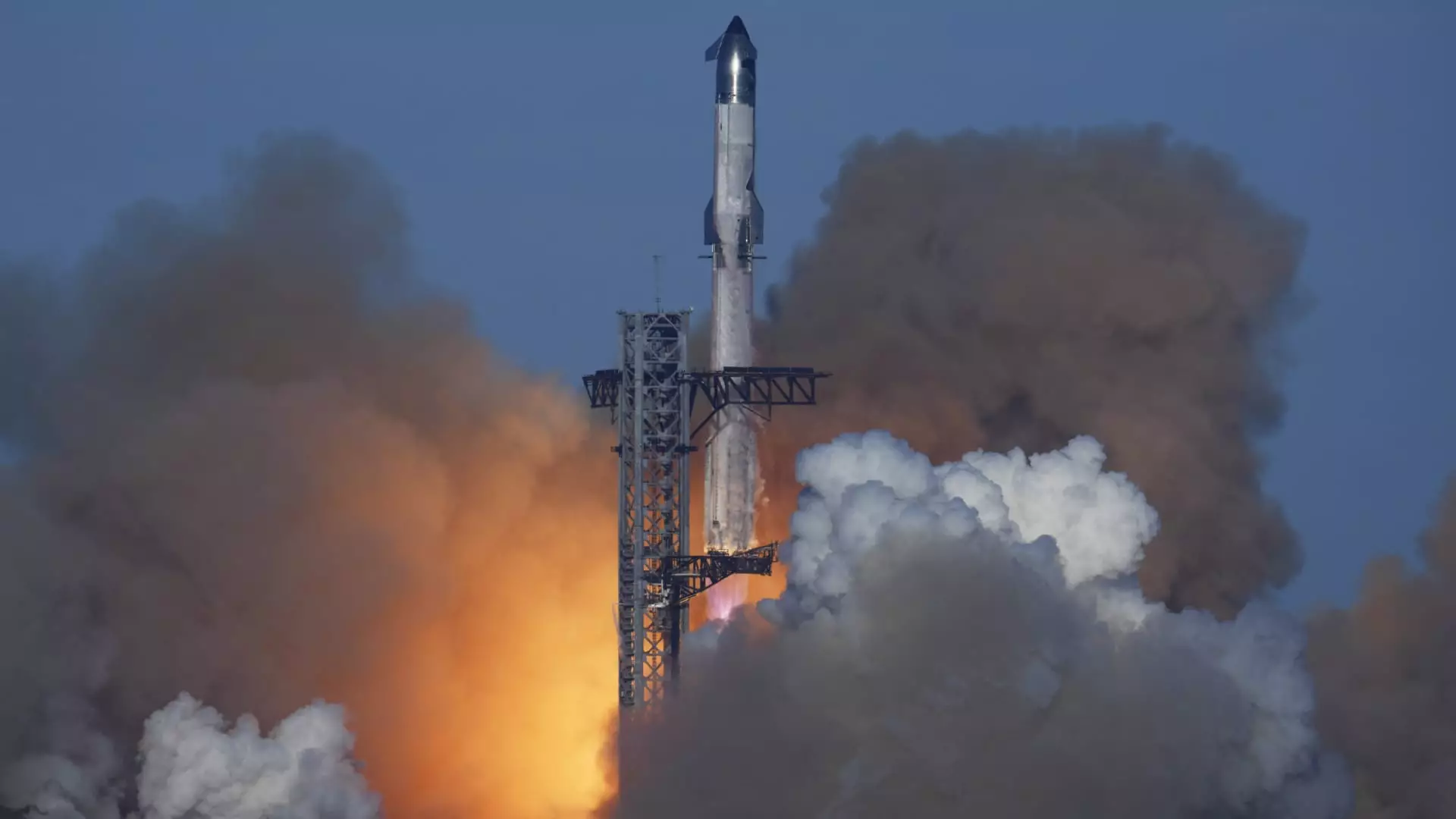On a pivotal Friday, the Federal Aviation Administration (FAA) announced a significant measure regarding SpaceX’s ambitious Starship rocket program—its grounding status following a recent midflight failure. This decision reflects the FAA’s commitment to ensuring safety in airspace, particularly given the incident’s ramifications that necessitated diversions for several commercial airlines. The grounding of such a powerful rocket contrasts with the general atmosphere of innovation and rapid advancement in aerospace technology, bringing to light the delicate balance between exploration ambitions and operational safety requirements.
During the test flight, shortly after its launch, Starship experienced a catastrophic failure, leading to its explosion midair. This unfortunate event sent debris raining down toward the Caribbean, specifically impacting property in the Turks and Caicos Islands. Although the FAA confirmed that no public injuries were reported, the implications for passenger flights were immediate. Major airlines, including American Airlines, JetBlue, and Delta Air Lines, were forced to alter their flight paths, resulting in substantial delays and operational challenges. This incident underscores the complexities and potential hazards associated with rocket launches, especially over populated areas.
The FAA has taken a proactive approach by initiating an investigation into the failure, a necessary step to ascertain the causes and implications of the incident. As part of this scrutiny, any required corrective measures must be implemented by SpaceX before the FAA considers reissuing a license for future launches. The activation of a “Debris Response Area” by the FAA represents an essential safety protocol, aimed at informing pilots about areas where debris could fall—a crucial aspect of coordinating air traffic in the wake of rocket launches.
Following the incident, SpaceX publicly acknowledged its belief that a fire within the vehicle triggered the disintegration of Starship. Their communication efforts, however, faced criticism due to apparent discrepancies. Initially, SpaceX indicated on its website that the debris had fallen within a designated hazard area, directly conflicting with FAA assessments regarding the activation of a debris response protocol. As the situation developed, SpaceX adjusted this language, opting for broader terminology that hinted at compliance with safety measures. This inconsistency raises questions regarding effective communications, especially from an organization heavily involved in public interest projects.
As SpaceX navigates this setback, the intersection of technological innovation and regulatory oversight becomes increasingly apparent. While the pursuit of advancements in space exploration is vital, ensuring the safety of surrounding environments and air traffic remains paramount. The ongoing investigation and subsequent measures implemented by SpaceX will likely set significant precedents for future launches and regulatory frameworks. The aerospace industry must learn from such experiences; the dual focus on ambition and safety will be critical to the collective progress in exploring the final frontier.

Leave a Reply